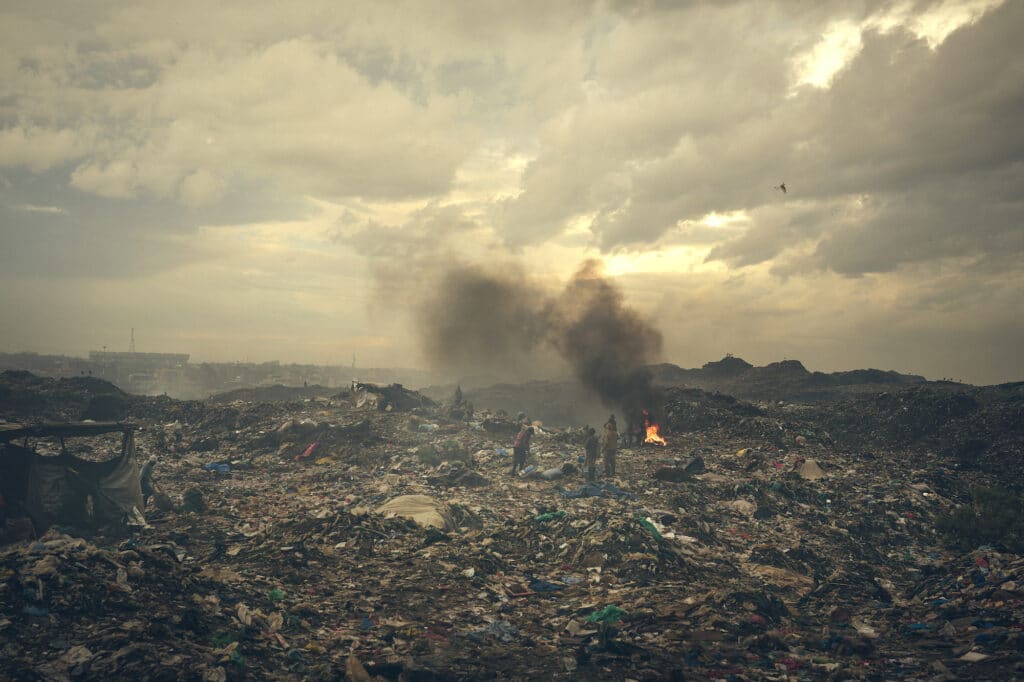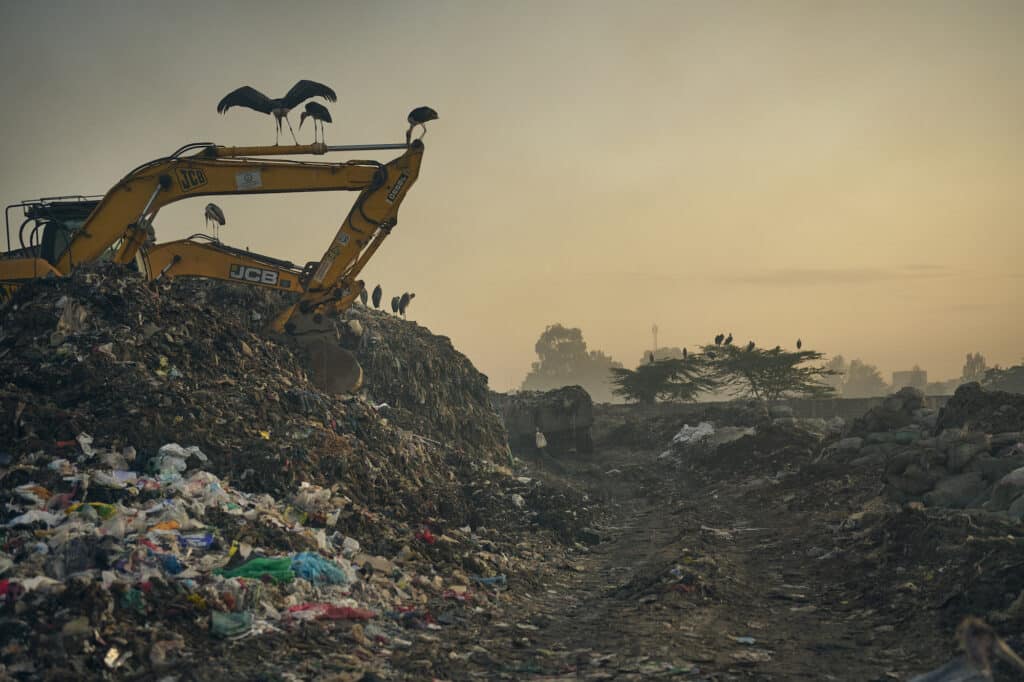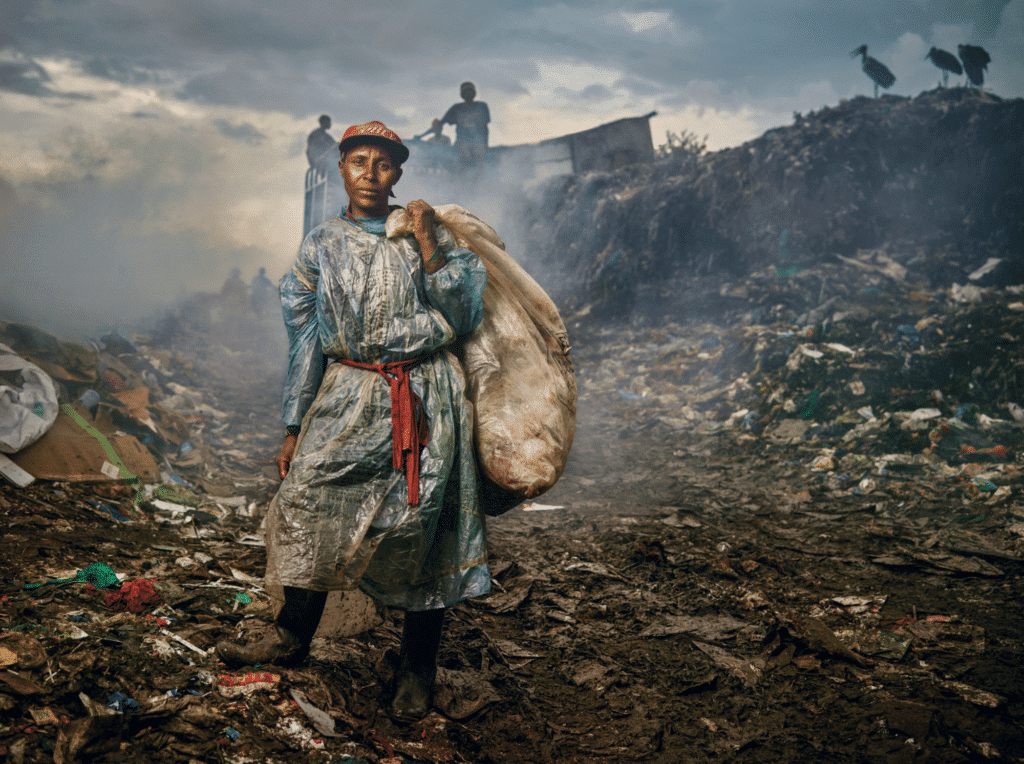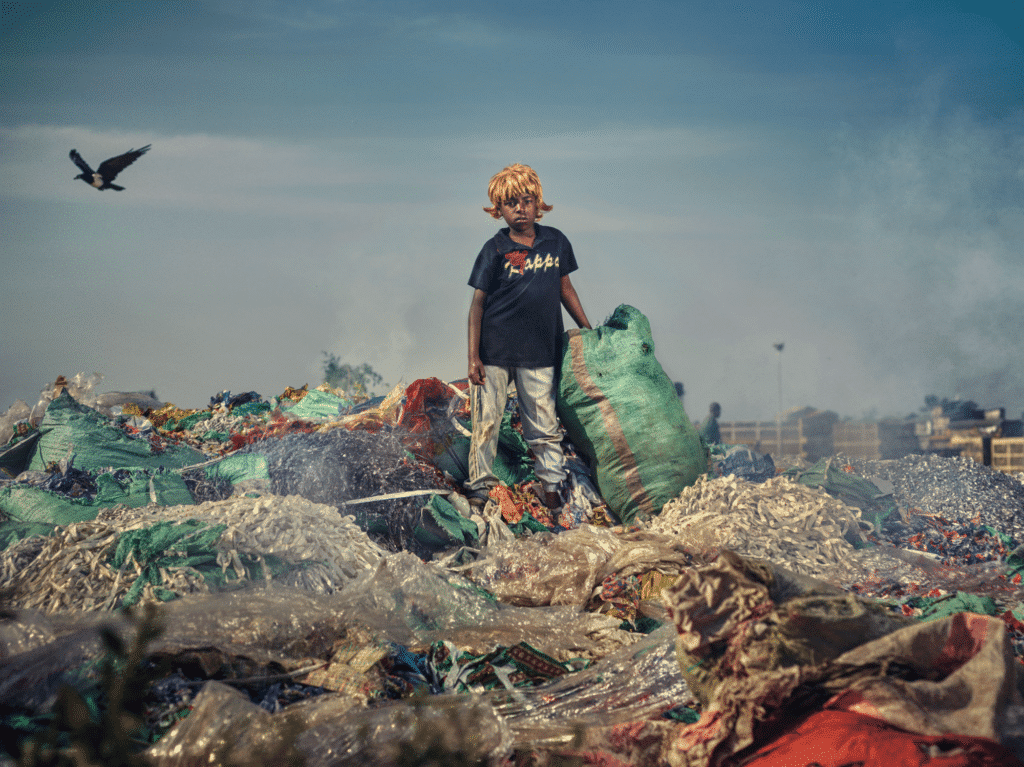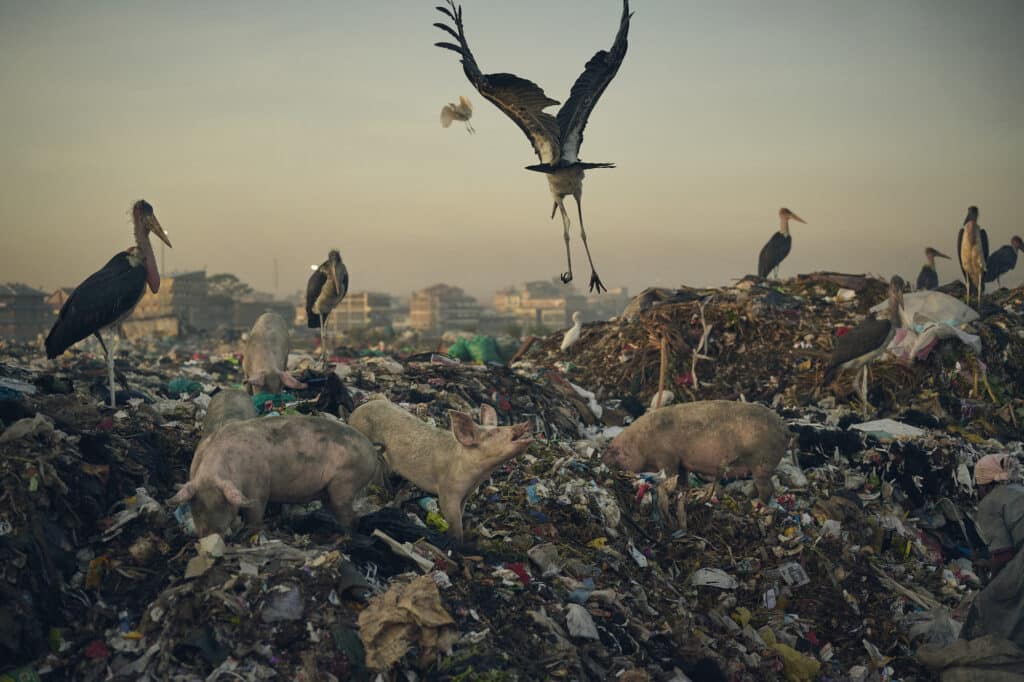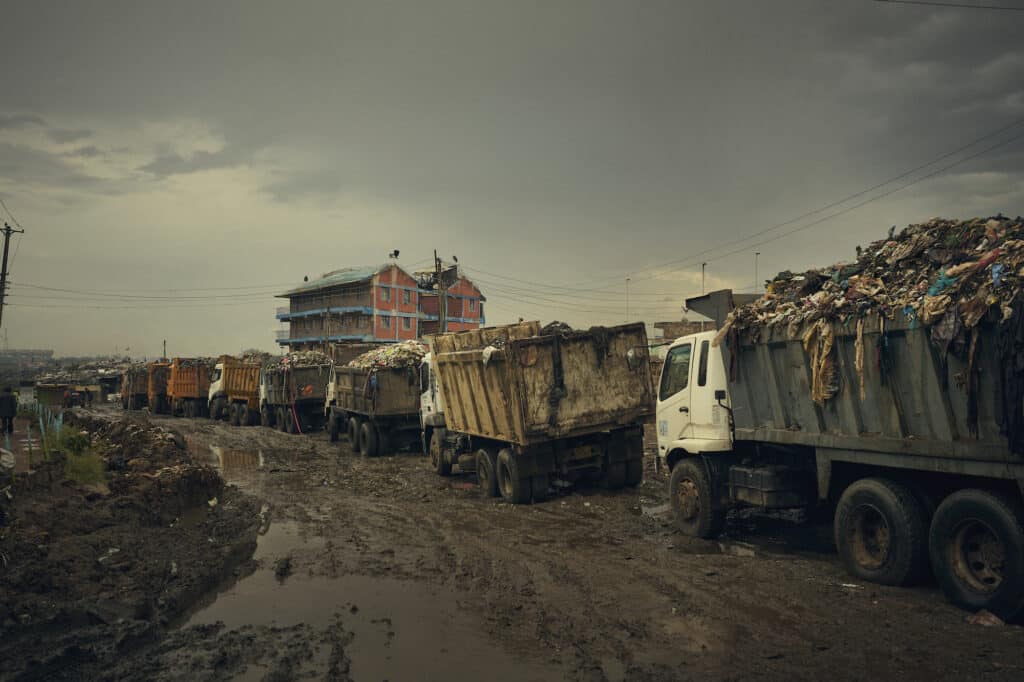As British photographer Sam Barker states after visiting the site, “Cartel gangs run things and operate as part of a fully functioning economic system serving some 3,000 local families in Dandora and the surrounding slums. With its own rules, system of commerce, and even its own church and hotel, it’s a hellish yet working habitat. The cartels run arms deals using lorries to carry weapons in and out of the area while the local police keep their distance.”
2,000 tons of solid waste are generated daily in Nairobi
Barker’s images pack a punch, forming a cohesive whole by using an applied treatment that heightens the almost tactile nature of being embedded in this alternate universe. Working deep in the heart of Dandora, Barker captured photos which share what can only be described as a front row seat to terror and tragedy. Through his classically framed photos, we see the secure hand of a sensitive artist in a place where humans and animals struggle to share society’s waste — yet the photos convey a sense of pride through survival in his subjects.
It’s hard not to imagine the deep, pervasive stench that rises into the air in Dandora after seeing Barker’s arresting images. These are things that cannot be unseen. With unrestricted dumping of domestic, industrial, medical, and agricultural waste, it is estimated that more than 2,000 tons of solid waste are generated daily in Nairobi.
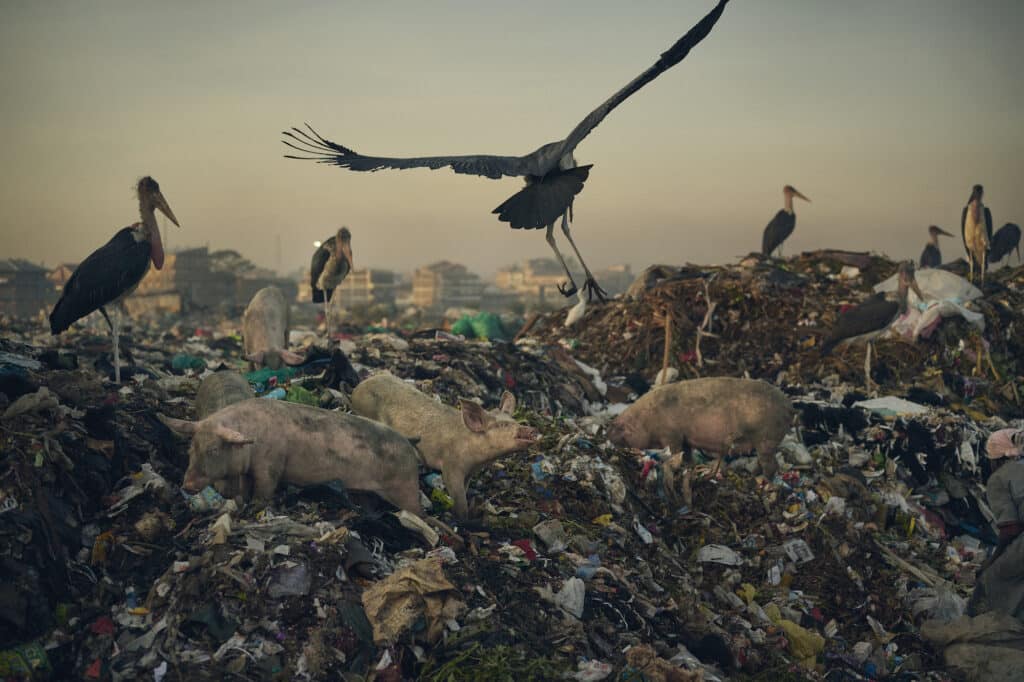
After the human and animal hunters pick through the waste for things to eat or sell, what’s left is set on fire. Noxious fumes travel to the nearby slum of Korogocho and other surrounding neighborhoods, where studies have found the air pollution is linked to childhood cancers and cognitive impairment in both children and adults.
“People are not living here; they are only surviving.”
Father Maurizio Binaghi of St. John’s School in Korogocho says, “People are not living here; they are only surviving.” With roughly 200,000 people housed in approximately 0.6 square miles, this teeming mass of humanity is known for escalating rates of crime, poverty, domestic violence, alcohol and drug abuse, and widespread HIV/AIDS, all compounded by the smells of decay emanating from Dandora. Students at St. John’s describe coughing and breathing difficulties, eye problems from the pollution, and missed days of school due to asthma and allergies to smoke.
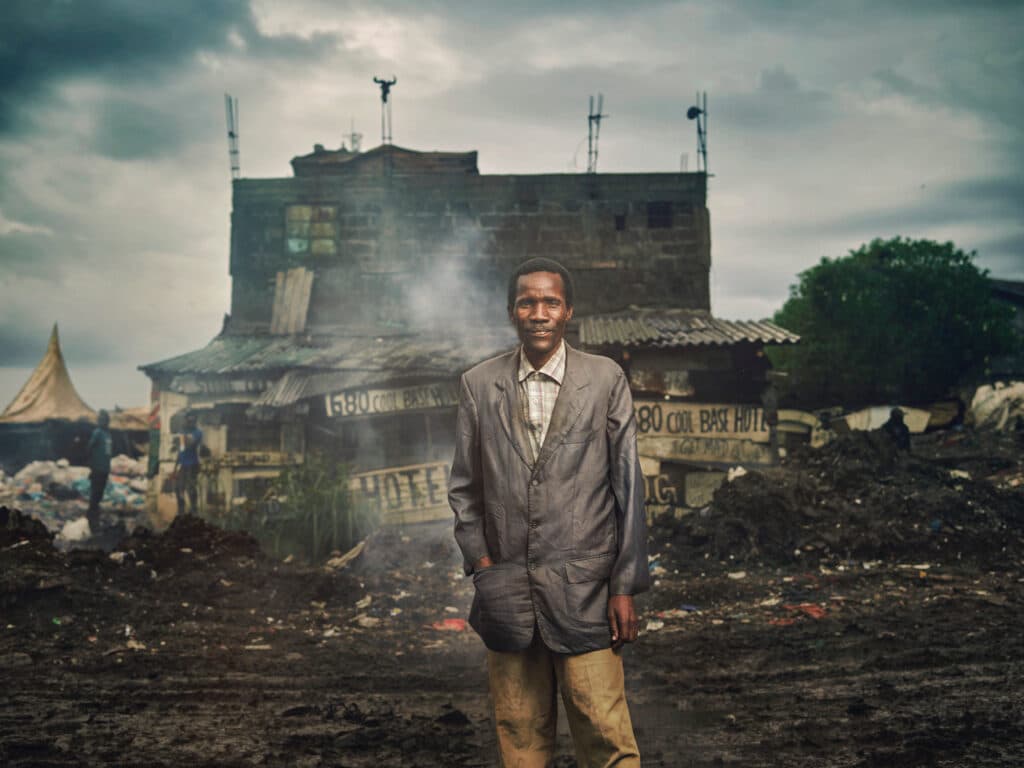
Dandora was declared completely full in the mid-1990s, but as evidenced by Barker’s compelling photos, dumping continues for one simple reason: people make money from the waste. In what is described as a “perilous recycling economy,” this steaming repository of mankind’s waste puts food on the tables of those 3,000 families. Due to a vicious cycle that shows little chance of ending, children often have only two choices: help the family find food through scavenging or get swept up in cartel life as the only way to survive.
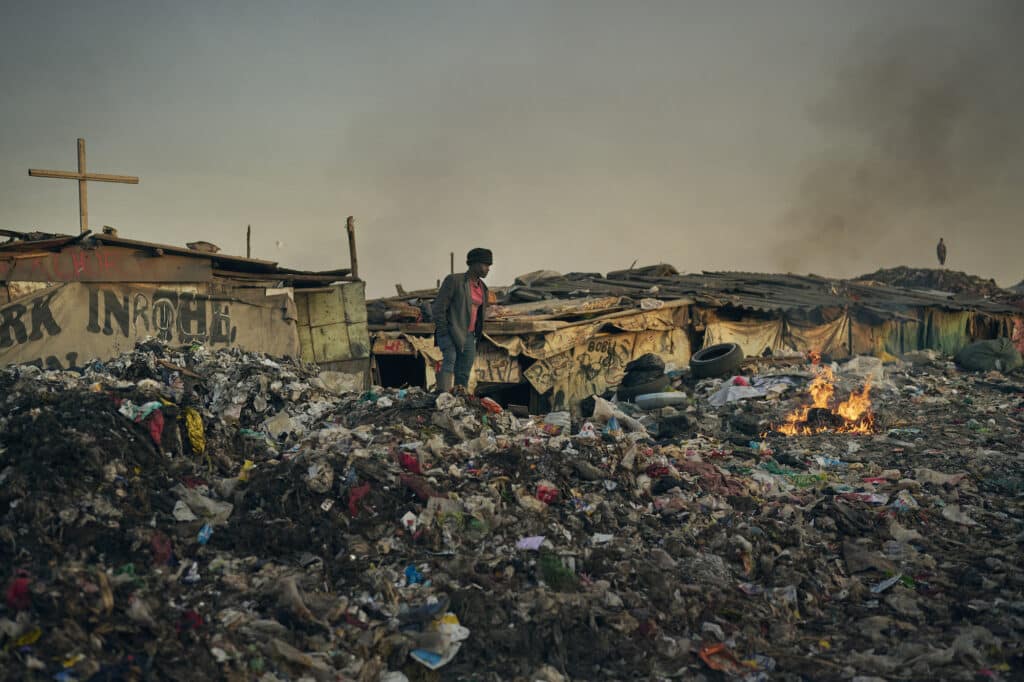
A pact with the devil
The microeconomy that governs Dandora reads like a pact with the devil. Since basic human survival depends on food, for those who live at the edges of existence it matters less if the food is discarded or nearly rotten than if it might help feed a family.
“Between 3,000 and 5,000 men, women and children endure the daily search of the noxious piles of rubbish wearing no protective clothing or gloves”
Those who risk their lives by combing through the refuse of society — everything from old batteries and electronics to the pre-formed plastic used in packaging to tires and ragged clothing and worn-out shoes — looking for spoiled fruit or moldy bread that they can then sell for pennies are providing a life-saving service, even if just for a few people.
Barker says, “Between 3,000 and 5,000 men, women and children endure the daily search of the noxious piles of rubbish wearing no protective clothing or gloves alongside the giant storks and wild pigs; this toxic culture leaves the people exposed to the brutal order that is the way of life here.”
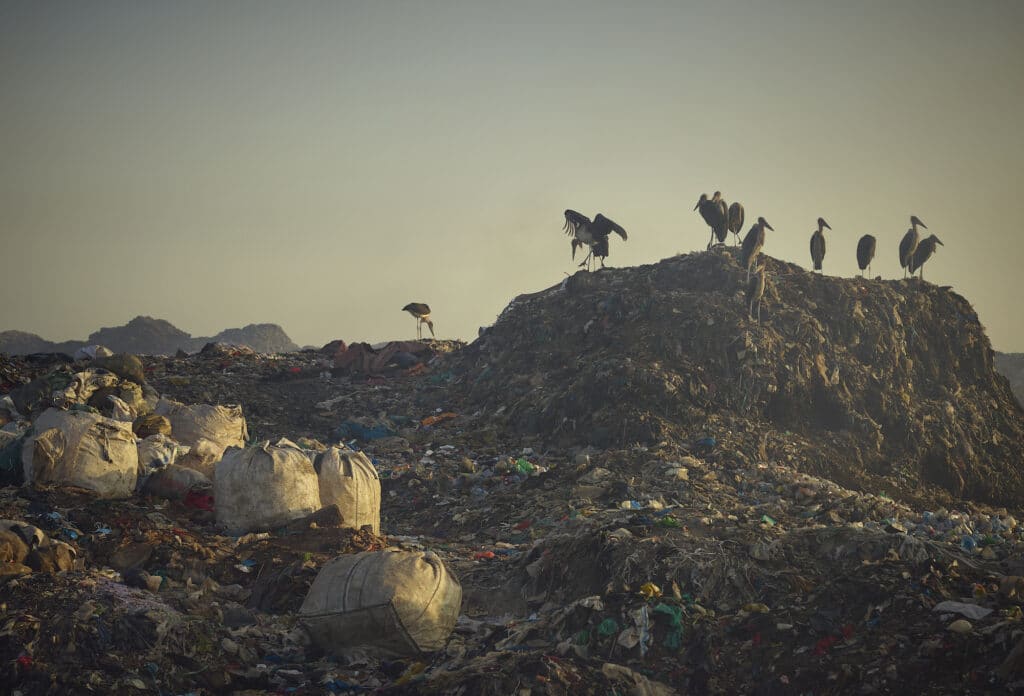
Barker’s photos are powerful images that hit the heart and mind in a visceral way; one can almost smell the sour pungency of the garbage through the added clarity of a medium-format camera used in a way usually reserved for high-end fashion and beauty or luxury items captured in a perfect light. Working over the course of two days (with a fixer close by), Barker has managed to instill his subjects with reverence and heart-breaking humanity by illuminating the people who toil in this purgatory.
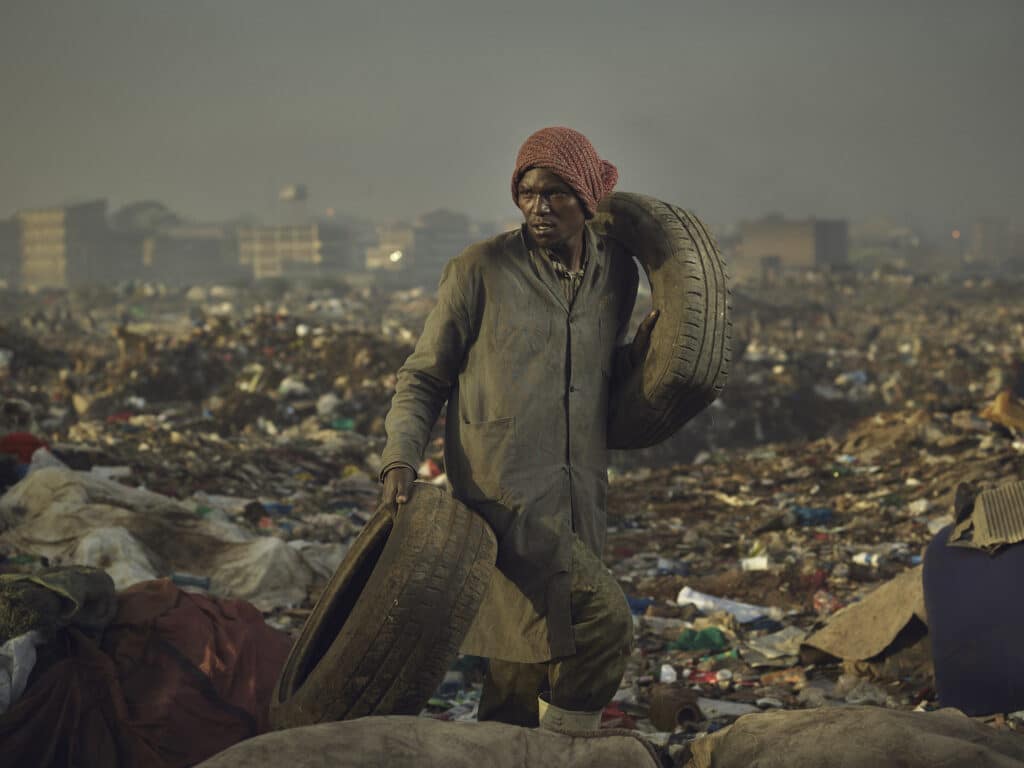
The entire series “The waste pickers of Dandora” can be seen on Sam Barker’s website.

